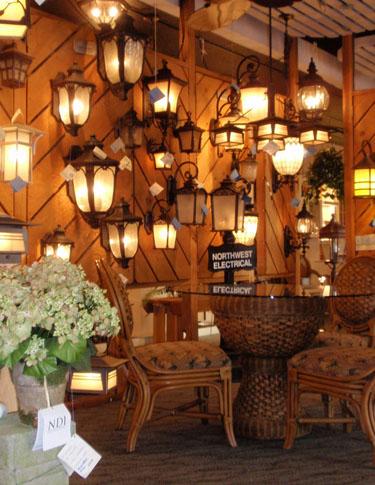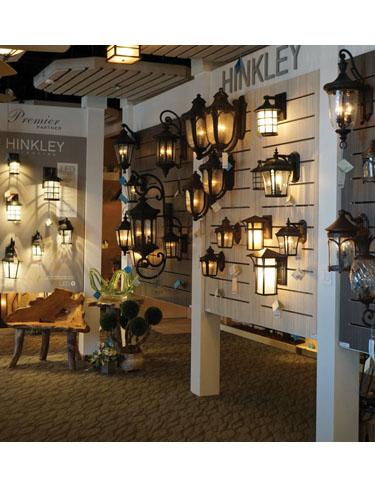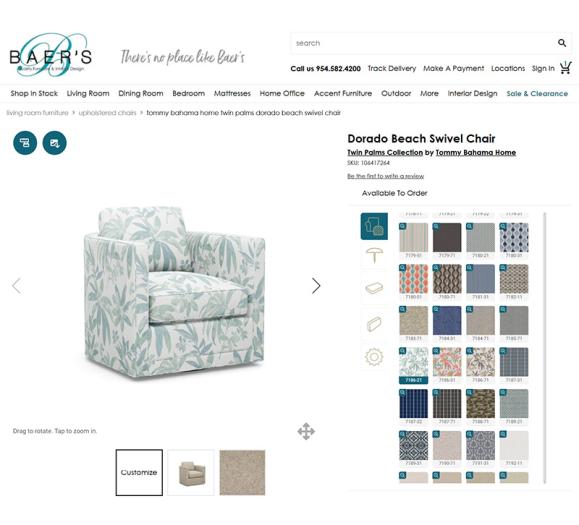

Northwest Lighting and Accents is busy putting the finishing touches on a big remodel project they began more than a year ago to make room for fully integrated fan, bath and outdoor experience labs in their Mount Prospect, Illinois, showroom. These days, customers would have to look hard to notice that the team’s vision isn’t quite complete, but even when things were a bit more rough around the edges, Northwest Lighting kept customer traffic steadily flowing past the work-in-progress without skipping a beat.
“It was never an option for us to shut down the entire showroom during the project,” says Thomas Reindl, president of Northwest Lighting. “We simply couldn’t afford to close up shop, and we didn’t need to. We’re lucky in that we have a second level, and the room build-outs only consume about 40 percent of that second floor. Still, projects like this can be disruptive, so we figured out ways to keep our customers safe and happy even at the height of the construction.”
Minimize disruptions
Reindl admits that things got pretty messy when contractors built out the wall sections of the new experience rooms. But to keep the distractions like noisy pounding and dust to a minimum, the workers did all the wall work at once. They also curtained the area off with plastic to prevent dust particles from reaching other areas of the showroom and laid out a protective runner in high-traffic areas to prevent messes on the carpet flooring.
One of the biggest things Northwest did to avoid the transferal of dust particles was to use a plastering process instead of dry wall.
“Plaster is more expensive than dry wall, but it doesn’t generate as much dust,” Reindl says. “As a lighting showroom, dust can be such a nightmare, so it was worth it for us to use the plaster process. We also curtained everything off and used a vacuum sander that sucked up any excess dust we did generate and were able to keep airborne dust at a minimum.”
Offer it all
When Designers’ Resource Collection (DRC) expanded its Costa Mesa, California, showroom last year, principal Pamela Kellogg and her team scheduled construction in the evenings and over weekends when the showroom was closed, so they could stay open for their clients during their normal business hours. In those off hours, the team also moved DRC’s inventory of furniture, lighting and casegoods around to make sure the product was easy to get to and to limit disruption to their clients’ shopping experience.”
“DRC is constantly rearranging things when items are sold off the showroom floor, so every time a client comes in, the space looks little different,” says Joseph Aldrich, principal consultant with The Cypress Group and spokesperson for DRC. “So, during the construction, DRC design associates were easily able to steer clients away from those areas in which the work was being done.”
Likewise, at no point during its construction process did Northwest Lighting turn customers away from a particular product category, even if the area in which it was typically housed was temporarily off limits.
“You can’t tell a customer, ‘Sorry, that part of our showroom is under construction, so you can’t see the product,’” Reindl says. “We were never without displays that customers could shop from. A lot of times it wasn’t ideal, but we made do with what we had, and customers didn’t seem to be bothered in the least.”
Create excitement
In fact, both Reindl and Aldrich agree that the promise of exciting new additions to their respective showrooms seemed to really pique customers’ interest, lending a sense of excitement and optimism to the changes that lay ahead. That revelation makes perfect sense to retail design consultant Linda Cahan.
“That fact that you care enough about your showroom and the products you offer to renovate or remodel speaks volumes to your customers," says Cahan. “It shows your faith in the future of the showroom and your advantage over the competition. It tells them you are growing, changing and getting ready to offer something they can’t find anywhere else.”
Renovations pay off
According to retail design consultant Linda Cahan, making changes to your showroom is worth the blood, sweat and tears. In her essay “The Power of Renovations,” she notes:
· Renovations are a show of faith in the future of the store.
· They provide added value by helping customers and employees feel like they are worth the effort.
· On average, significant renovations to your store can help increase sales by 30-39 percent.
· A more cosmetic remodel (new carpet, paint, etc.) can increase sales by 12-20 percent.






